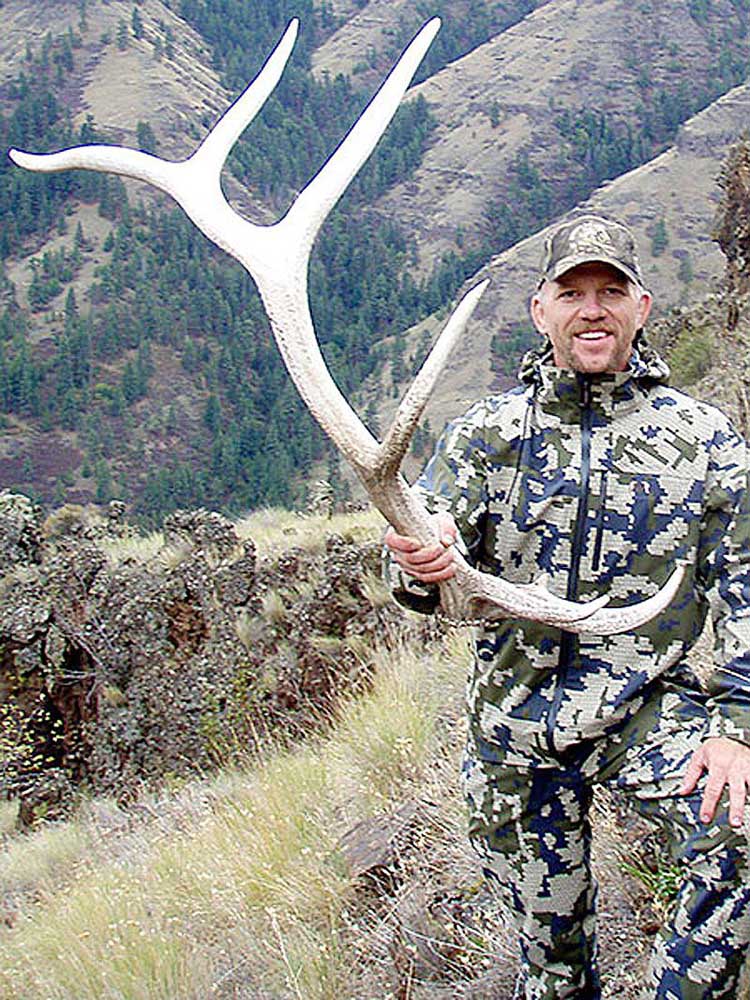Shed hunt responsibly to protect big game
Published 10:59 am Tuesday, March 3, 2015

- Contributed photo/Rob Tanner Elk sheds like this one are prized by hunters and collectors. Pictured: Rob Tanner, co-founder of Oregon Shed Hunters.
SALEM – As shed hunters hit the woods in search of prized elk and deer antlers, wildlife officials urge them to take care not to bother big game that may be vulnerable coming out of winter.
Buck deer usually shed their antlers from late December through March, and bull elk from late February through early April. They grow new antlers spring through summer.
Rob Tanner, co-founder of Oregon Shed Hunters, the sport of shed hunting is gaining popularity.
“We are noticing more people getting out, but the clientele has changed a bit,” he says. “It’s no longer just hardcore hunters; nowadays it’s more of a family event with mom, dad, kids and even pets out shed hunting.”
But wildlife biologists have concerns about the sport’s impact on big game if it’s not practiced responsibly.
The peak of shed hunting season in late winter/early spring coincides with tougher weather and less forage availability for big game, making it a vulnerable time for wildlife.
Biologists say shed hunters using motor vehicles can put wildlife on the move just when these animals need conserve their energy reserves. Pets and people on foot or horseback can also disturb big game.
“Shed hunters and their dogs can pressure, stress and exclude deer from the very ground that was set aside to help them survive the winter,” said Chase Brown, Oregon Department of Fish and Wildlife assistant district wildlife biologist in The Dalles.
This year’s mild winter has made conditions easier for big game, but also makes it easier for people to get into remote places where they may disturb the animals. Mark Kirsch, Umatilla District wildlife biologist, says that also can result in resource damage from vehicles using unimproved roads or going cross country, gates left open, trespassing, and movement of animals to private agricultural land where they cause damage.
Following are some tips to protect the animals while still enjoying the hunt for horns.
• Don’t disturb big game animals: Don’t approach animals or follow the same ones on a daily basis.
• Respect road and area closures, in place to protect winter range and wintering big game. Some ODFW wildlife areas are entirely closed to public access during late winter; other areas have road and travel restrictions. More information on specific closures below or see the 2015 Oregon Big Game Regulations.
• Don’t take vehicles off-roading. The ground is water-logged at this time of year and off-roading in the wrong place can damage critical wildlife and fish habitat. Travel by foot or horseback instead.
• Don’t be in the same spot every day. Deer and elk might need to be in that spot for food or cover, and your presence will keep them from it.
• Keep dogs under your control, and don’t let them chase wildlife. State law prohibits dogs – and people – from harassing wildlife.
• Don’t trespass on private property. You always need permission to be on private land. Under Oregon law, antlers that are shed on private land below to the landowner.
At this time of year, Oregon State Police patrol winter range closures and travel management areas by air and by vehicle.
Road closures and other regulations
Several ODFW-managed wildlife areas and travel management areas are closed during the winter to protect big game on winter range, while others have travel restrictions.
Here’s a look at some of the restrictions. For more information, see Page 80-85 of the 2015 Oregon Big Game Regulations.
Wildlife Area closures;
• Phillip W Schneider Wildlife Area (Dayville): Closed to public access Feb. 1 – April 14, some roads closed seasonally from Dec. 1-April 14.
• Elkhorn Wildlife Area (Baker and Union Counties): Closed to public access Dec. 1 – April 10.
• Bridge Creek Wildlife Area (near Ukiah): Closed to public access Dec. 1 – April 14.
• Jewell Meadows Wildlife Area (Clatsop County): Refuge and area closures.
• Ladd Marsh Wildlife Area (La Grande): Lands west of Foothill Road closed to entry Feb. 1 – March 31.
• Prineville Reservoir Wildlife Area (Maury and Ochoco Units): Closed to motorized vehicle access Nov. 15 or Dec. 1-April 15.
• White River Wildlife Area (Wamic): Road closures and restrictions.




